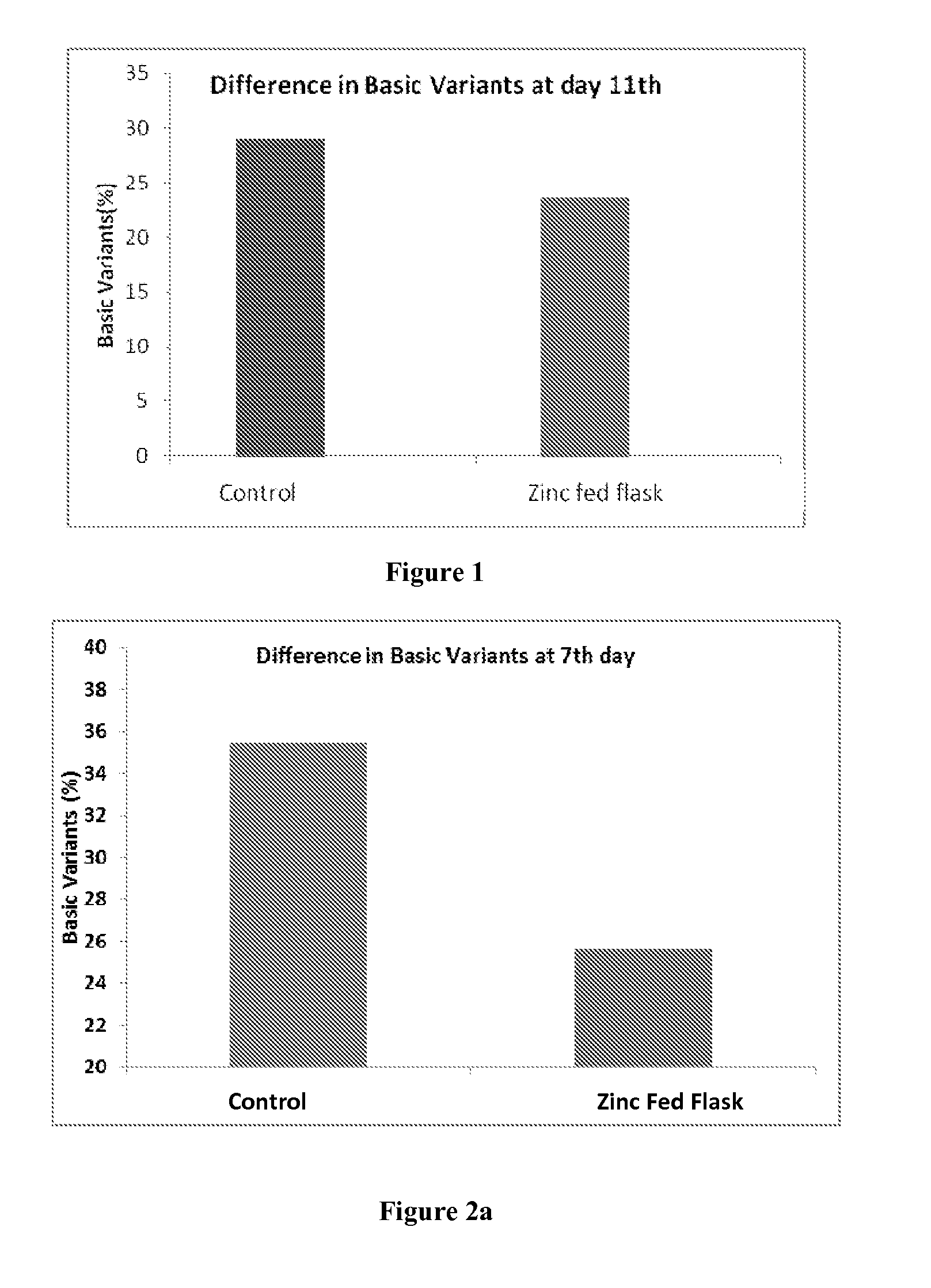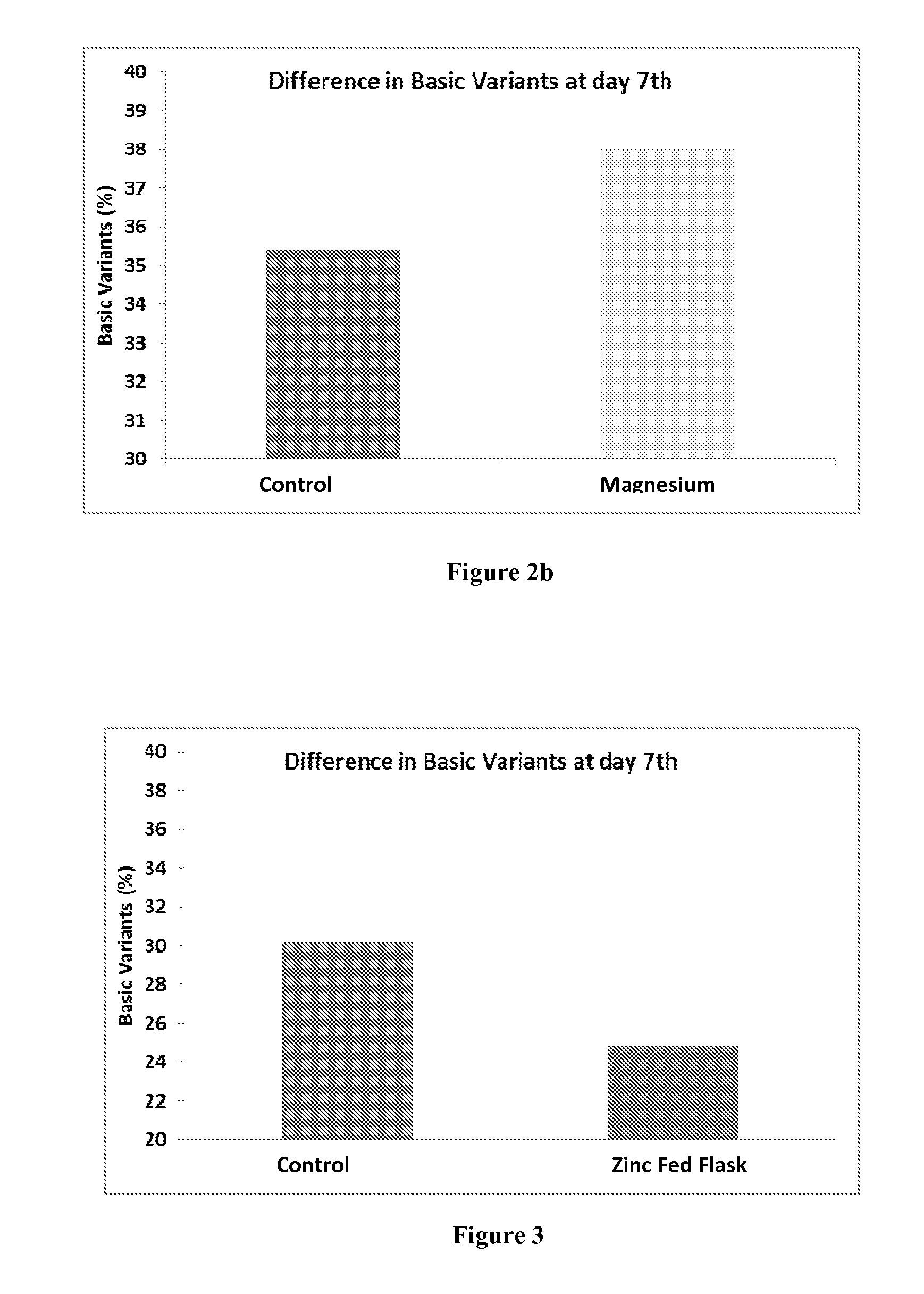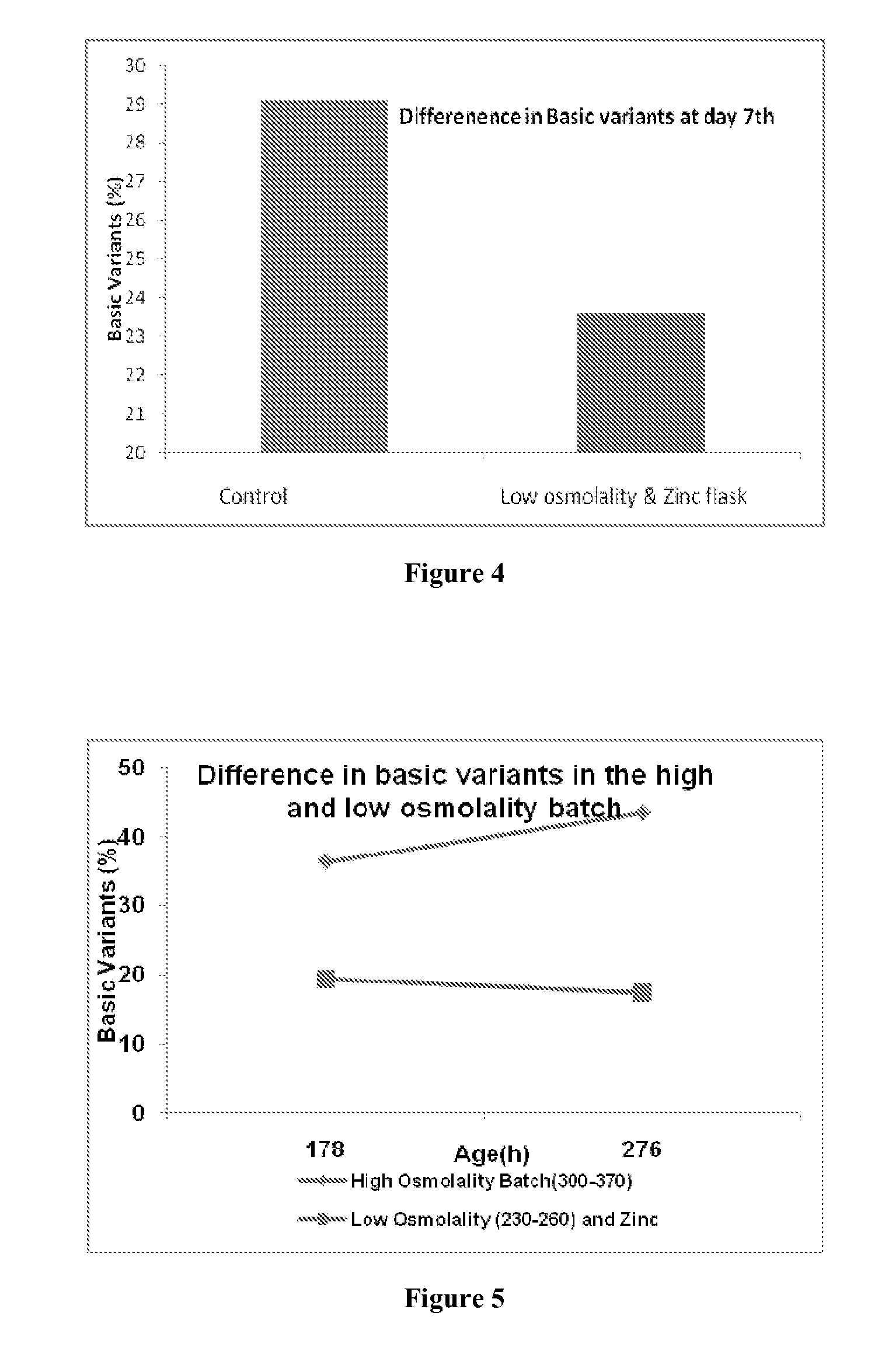Method for Reducing Heterogeneity of Antibodies and a Process of Producing the Antibodies Thereof
a heterogeneity reduction and antibody technology, applied in the field of reducing heterogeneity of antibodies and a process of producing antibodies thereof, can solve the problems of loss of efficacy and risk of adverse side effects
- Summary
- Abstract
- Description
- Claims
- Application Information
AI Technical Summary
Benefits of technology
Problems solved by technology
Method used
Image
Examples
example 1
Use of Zinc Ions to Decrease Basic Variants or Increase the Main Peak / 0 Lysine of Antibody-1
[0072]The culture media with osmolality of 300-310 mOsm / kg was supplied and inoculated with cells at a concentration of 0.5-0.6×10̂6 / ml and was allowed to grow. Once the cell count reached 12-13×106 / ml on 4th day, the temperature was shifted from 37° C. to 31° C. The first shot of Zinc was fed at a concentration of 0.1 mM. On the 8th day, another shot of zinc was fed at concentration of 0.1 mM and when the cell count was 13-15×106 / ml. It was allowed to run till 11th day. The observed heterogeneity is tabulated as below.
TABLE 1CultureBasicZnTrialDay0 Lysine (%)(L1 + L2) %feeding (day)ControlDay 11th5527.8Zn fed flask60.924.14th & 8th day
[0073]FIG. 1 illustrates the above results.
example 2
Use of Zinc Ions to Decrease Basic Variants or Increase the Main Peak / 0 Lysine of Antibody 1
[0074]Cell culture was performed in a fed batch mode. In the fed-batch cultures the mammalian host cells and culture medium were supplied initially and nutrients were fed periodically. The culture media was inoculated with cells at a concentration of 0.5-0.6×106 / ml and was allowed to grow. Once the cell count reached 12-13×106 / ml (at day 3rd), the temperature was shifted from 37° C. to 31° C. and then the first shot of Zinc ions was fed at a concentration of 0.1 mM. Another shot was fed when the cell count reached 13-15×106 / ml (at day 6th) at a concentration of 0.1 mM and the flask was allowed to run till day 7th. In another Culture medium, magnesium ions were fed which showed no difference to basic variants and this example has been given as negative control. The observed heterogeneity is tabulated as below:
TABLE 2BasicZnTrialCulture Day0 Lysine (%)(L1 + L2) %feeding (day)ControlDay 7th56.23...
example 4
Use of Zinc Ions to Decrease Basic Variants or Increase the Main Peak / 0 Lysine of Antibody 2
[0079]Cell culture was performed in fed batch mode. The cultures of the mammalian host cells and culture medium (with low osmolality) were supplied initially and nutrients were fed periodically. The culture media was inoculated with cells at 0.5-0.6×10̂6 / ml and allowed to grow. Once the cell count reached 12-13×106 / ml (at day 3rd), the temperature was shifted from 37° C. to 31° C. and then the first shot of Zinc ions was fed at a concentration of 0.1 mM. Another shot was added when the cell count reaches 13-15×106 / ml (at day 6th) at a concentration of 0.1 mM and the fermentation was allowed to run till day 7th. The observed heterogeneity is tabulated as below
TABLE 4BasicZnTrialCulture day0 Lysine (%)(L1 + L2) %feeding (day)ControlDay 7th49.429.1Zn fed flask5523.6Day 3rd & 6th
[0080]FIG. 4 illustrates the above results.
PUM
| Property | Measurement | Unit |
|---|---|---|
| temperatures | aaaaa | aaaaa |
| temperatures | aaaaa | aaaaa |
| working volume | aaaaa | aaaaa |
Abstract
Description
Claims
Application Information
 Login to View More
Login to View More - R&D
- Intellectual Property
- Life Sciences
- Materials
- Tech Scout
- Unparalleled Data Quality
- Higher Quality Content
- 60% Fewer Hallucinations
Browse by: Latest US Patents, China's latest patents, Technical Efficacy Thesaurus, Application Domain, Technology Topic, Popular Technical Reports.
© 2025 PatSnap. All rights reserved.Legal|Privacy policy|Modern Slavery Act Transparency Statement|Sitemap|About US| Contact US: help@patsnap.com



